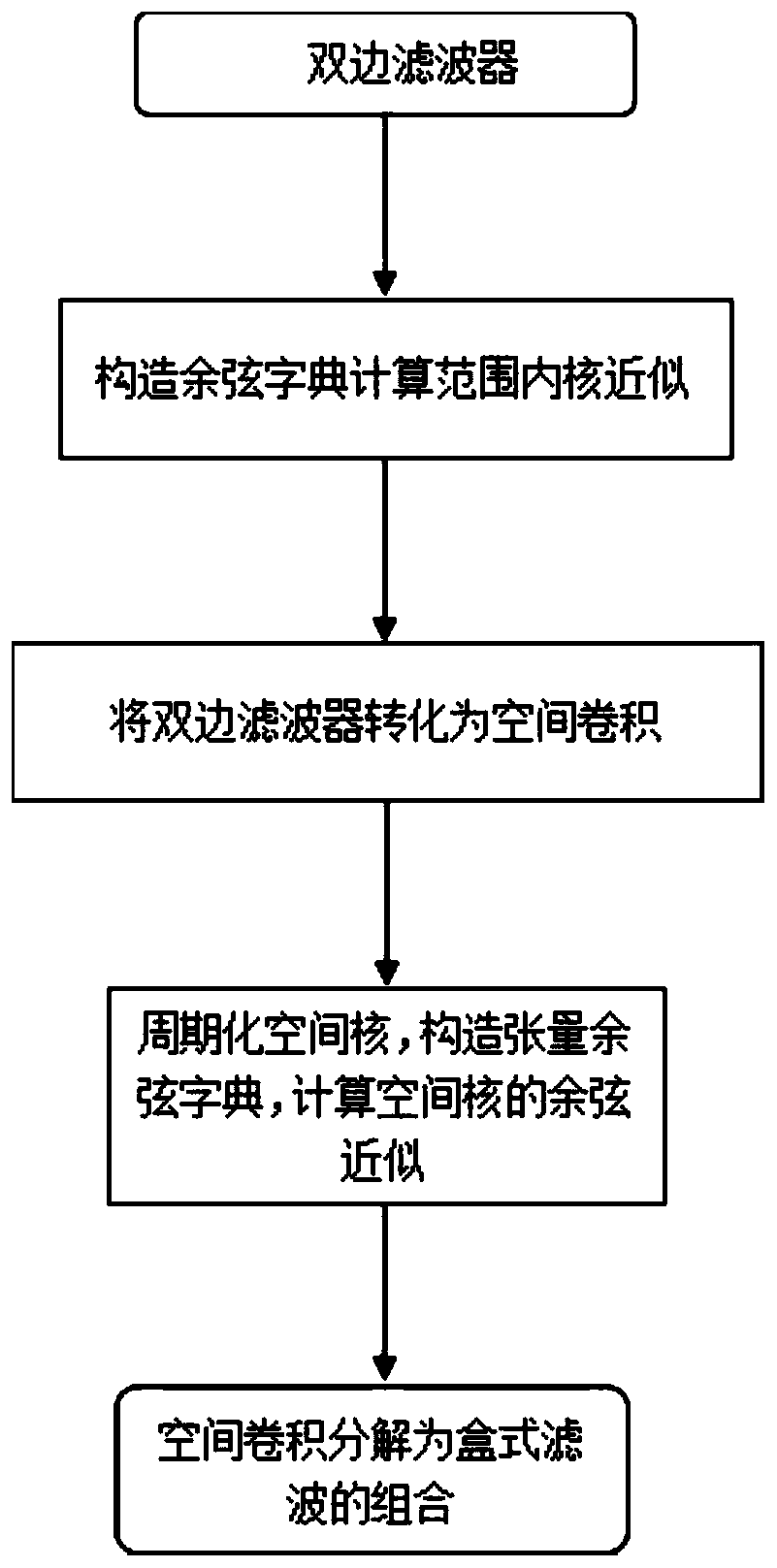Sparse approximation acceleration bilateral filtering method based on learning cosine dictionary
A technique of sparse approximation and bilateral filtering, which is applied in image enhancement, image analysis, instrumentation, etc., and can solve problems such as dictionary changes
- Summary
- Abstract
- Description
- Claims
- Application Information
AI Technical Summary
Problems solved by technology
Method used
Image
Examples
Embodiment Construction
[0008] combine figure 1 , a sparse approximation accelerated bilateral filtering method based on learning a cosine dictionary, including 1) converting the bilateral filter into a spatial convolution; 2) decomposing the spatial convolution into a linear combination of box filters, a total of two processes.
[0009] Converting a bilateral filter to a spatial convolution involves the following steps:
[0010] Step 1, the edge-preserving ability of BF comes from normalized convolution (1), according to the definition of BF, its formula can be divided into two parts: molecular (2) and the denominator (3), where the denominator is a special case of the numerator, and the spatial proximity K s (x) and radiation similarity K r (x) is a Gaussian function, x and y are image coordinates, and I(x) and I(y) are corresponding pixels.
[0011]
[0012]
[0013]
[0014] Sequence extension-based methods employ a linear combination of spatial convolutions to approximate BF with ...
PUM
 Login to View More
Login to View More Abstract
Description
Claims
Application Information
 Login to View More
Login to View More - R&D
- Intellectual Property
- Life Sciences
- Materials
- Tech Scout
- Unparalleled Data Quality
- Higher Quality Content
- 60% Fewer Hallucinations
Browse by: Latest US Patents, China's latest patents, Technical Efficacy Thesaurus, Application Domain, Technology Topic, Popular Technical Reports.
© 2025 PatSnap. All rights reserved.Legal|Privacy policy|Modern Slavery Act Transparency Statement|Sitemap|About US| Contact US: help@patsnap.com



